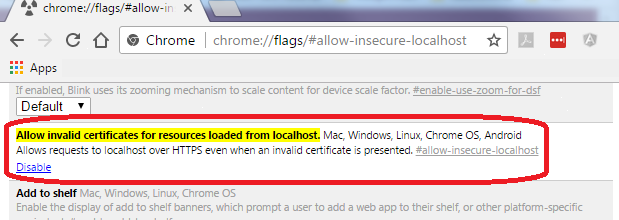import SSL certificate
Importing SSL Certificates
This applies to Session State Management and SSL certificates. Getting an https:// request to work from a .NET application to a classic asp application the SSL certificate needs to be stored in the Trusted Third Party store and may need to be added to a browsers trusted store (Chrome).
- Exporting SSL Certificate from Localhost
- Open IIS
- Click on Machine Name in Connections pane (left side)
- Double click the “Server Certificates” in middle pane
- To export as .cer
- Select or double click Certificate to export
- Click on the “Details” tab
- Click on the “Copy to File…” button
- Click Next > Next > Next
- Set Filename and location and Click on Next
- Click on Finish button
- To export as .pfx
- Right click on Certificate to export
- Select “Export…”
- Select file location to save certificate to, it will save as *.pfx file.
- Enter password twice, Click OK button to save
- Import SSL Certificate
- Run MMC.exe (click on Windows icon in lower left corner and enter mmc)
- Click on File > Add/Remove Snap-in…
- In the “Add or Remove Snap-ins” dialog box, select “Certificates” in the left side (Available snap-ins:)
- Click “Add >” button
- Select “Computer account”
- Select “Local computer: (the computer this console is running on)”
- Click on the “Finish” button
- Click “OK” button
- In left pane, click on: Certificates > Trusted Root Certification Authorities > Certificates
- In the right pane, click on “More Actions > All Tasks > Import…”
- Click “Next >” button
- Browse to the location where you exported or saved your certificate and select it.
- Click “Next >” button
- Select “Place all certificates in the following store”
– Select the “Trusted Root Certification Authorities” (click “Browse…” button and select if necessary.) - Click “Next >” button
- Click “Finish” button
- Import SSL Certificate into Chrome
- Open Chrome
- Select Chrome Settings > Show advanced settings > HTTPS/SSL > Manage Certificates
- Click on “Trusted Root Certification Authorities” tab and scroll down to find the certificate. If the certificate is not visible, it needs to be imported. Click on the “Import” button and follow the instructions above for importing an SSL certificate.
- Select your certificate
- Click on Advanced and select all check boxes
- Click OK
- The Chrome browser may need to be restarted.
—————— Update ———————
Just found out there is now a flag for this at URL:
chrome://flags/#allow-insecure-localhost
